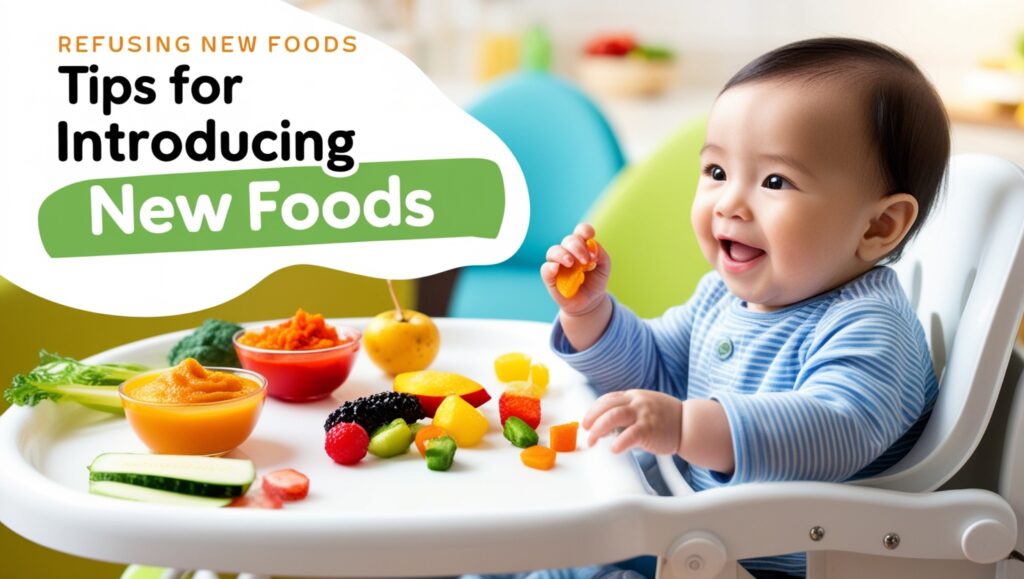Starting your baby on solids is a monumental step, filled with excitement and curiosity. Single-ingredient purees are the perfect introduction, offering gentle flavors, essential nutrients, and the chance to identify potential allergies early. Let’s dive into how to make this transition smooth and successful!
What Are Single-Ingredient Purees?
Single-ingredient purees are foods prepared from one ingredient only, such as sweet potatoes or apples. These purees:
- Help your baby’s digestive system adjust to solids.
- Allow you to identify any food allergies or sensitivities.
- Introduce your little one to the natural, unmasked flavors of food.
Benefits of Starting Simple
- Ease of Preparation: Single-ingredient purees are straightforward to make and store.
- Nutrient-Rich: They ensure your baby gets a concentrated dose of key vitamins and minerals.
- Customizable: You can adjust texture and consistency to suit your baby’s developmental stage.
How to Introduce Single-Ingredient Purees
- Begin Slowly: Offer one new food every 3–5 days to monitor your baby’s reaction.
- Start Small: Serve a teaspoon-sized portion and gradually increase as your baby gets comfortable.
- Observe Reactions: Look out for signs of allergies, such as rashes, diarrhea, or unusual fussiness.
Best First Foods for Single-Ingredient Purees
Vegetable-Based Options
- Butternut Squash: Mild and creamy, packed with vitamin A.
- Zucchini: Gentle on the stomach and hydrating.
- Green Beans: A great introduction to mild greens.
Fruit-Based Options
- Banana: Naturally sweet and easy to mash—no cooking required!
- Mango: A tropical treat full of vitamin C.
- Blueberry: Antioxidant-rich and delicious (blend well to remove skins).
Quick & Easy Single-Ingredient Puree Recipes
Avocado Puree
- Why It’s Great: Healthy fats for brain development.
- Ingredients: 1 ripe avocado.
- Instructions: Scoop out the avocado, mash or blend until smooth. Add a bit of breast milk or formula for a creamier texture.
Pumpkin Puree
- Why It’s Great: High in fiber and vitamin A.
- Ingredients: 1 small pumpkin.
- Instructions: Steam or bake pumpkin chunks until soft. Blend into a silky puree.
Peach Puree
- Why It’s Great: Perfect for introducing mild sweetness.
- Ingredients: 1 ripe peach.
- Instructions: Peel, steam, and blend until smooth.
Pro Tips for Starting Solids
- Create a Routine: Pick a consistent time for feeding when your baby is calm and happy.
- Invest in the Right Tools: Use a baby-friendly blender, silicone spoons, and bibs for less mess.
- Keep Mealtime Fun: Smile, talk, and engage with your baby during feeding time.
- Freeze Leftovers: Use small freezer-safe containers or ice cube trays to store portioned purees for up to 3 months.
Signs Your Baby is Ready for Solids
- Increased interest in your food.
- Ability to sit up and hold their head steady.
- Diminished tongue-thrust reflex (they don’t push food out of their mouth).
Introducing Allergens Safely
While single-ingredient purees are ideal, it’s also important to introduce potential allergens (e.g., eggs, peanut butter) early and safely. Consult your pediatrician before starting, and only introduce one allergenic food at a time.
Creating a Positive Mealtime Environment
- Sit your baby in a highchair with a supportive back.
- Offer meals in a quiet, distraction-free space.
- Be patient and encouraging—don’t force your baby to eat if they’re not ready.
Next Steps After Single-Ingredient Purees
Once your baby tolerates single-ingredient purees well, you can start combining flavors to create exciting combinations:
- Apple + Carrot.
- Avocado + Banana.
- Sweet Potato + Peas.
Gradually move to chunkier textures and small finger foods around 8–10 months to promote chewing skills.
Common Concerns About Starting Solids
Q: Can I add spices to purees?
A: Initially, stick to plain foods. Once your baby is comfortable, mild spices like cinnamon or nutmeg can be added sparingly.
Q: What if my baby refuses a food?
A: Don’t worry! Reintroduce it after a few days—babies often need multiple exposures to accept new flavors.
Q: Can I use store-bought purees?
A: Homemade is ideal, but high-quality store-bought options without added sugars or preservatives are also a good choice.
Conclusion: A Nutritious Start to Solids
Starting with single-ingredient purees ensures your baby gets the healthiest and safest introduction to solid foods. It’s a beautiful journey filled with discovery, bonding, and new experiences. By preparing fresh and simple meals, you’re giving your baby a nutritious foundation that will pave the way for a lifetime of healthy eating.

